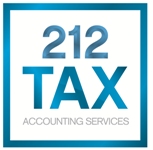Get the most out of your retirement tax strategies with the IRS retirement rollover rule update. Notice 2014-54, which applies to distributions after Jan. 1, 2015, lets taxpayers apply all after-tax basis towards their Roth IRA.
Before Notice 2014-54, there were several methods to separating pre-tax and after-tax dollars in order to transfer them to their appropriate accounts. Most of these methods were not only difficult, but also lacked an official endorsement from the IRS. If you moved amounts to more than one account, your distributions would include a proportional share of both a pretax and after-tax dollars.
Previously, only taxpayers that could meet a 20% withholdings on non-trustee to trustee transfers were eligible for retirement plan rollovers. Otherwise, taxpayers could receive a check directly and initiative a 60 day rollover of pre-tax and after-tax dollars. There were a few steps the taxpayer needed to take in order to complete this rollover process. First, they needed to deposit the pre-tax amount into a traditional IRA, as the amount that was rolled over was pre-tax dollars. Next, they needed to transfer the resulting balance – after-tax dollars – to a Roth IRA tax-free.
Now, when distributions are scheduled at the same time, they are seen as simply one distribution. To apply this retirement rollover rule update, the taxpayer has to let the plan administrator know how they want to allocate the amount; this must be done in writing and before the transfers occur.
Although retirement tax strategies have been simplified by this update, contact a CPA certified accountant at 212 Tax to make sure retirement rollovers transfer properly.
Request a Consultation
We are able to work with your unique schedule including after-hour appointments, most weeknights, and weekends.
Call to action
Build Growth Opportunities with Extensive Business Financial Services
We serve clients in a range of industries, including hospitality, nightlife, real estate, legal, and medical.


